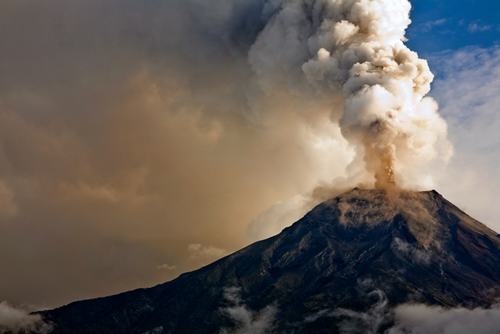Do you remember your the first science project you had to do for school? Whether it was yours or a classmate’s, chances are good you’ve seen a baking soda and vinegar science project volcano at some point in your life. But have you ever seen a real volcano up close and personal?
Next time you vacation to the islands of Hawaii, make seeing a volcano a priority on your list. Volcanoes have relevance in Hawaii, as the string of islands that make up Hawaii were formed as the result of eruptions over time.
“You’ve seen a baking soda and vinegar volcano.”
Volcanoes can provide plenty for you to do while on vacation. In addition to the breathtaking sights they provide, the unique ecosystems surrounding them are sure to wow you as well. Take the time to check out these powerful landmarks for yourself, and you won’t be disappointed. You can start your tour of volcanoes at Hawaii Volcanoes National Park. Take in more than 70 million year’s worth of information about some of Earth’s most awe-inspiring landmarks.
If you’re looking for a place to start your exploration of these ancient beauties, start by looking into active volcanoes. According to the University of Oregon State, there are five active volcanoes in Hawaii.
1. Kilauea
Translated roughly to “spewing” or “much spreading,” the volcano is considered one of the most active volcanoes in the world. In fact, there has been an eruption about once every four years throughout the last 245 years. There is actually an eruption happening right now! It’s been ongoing since 1983 and has resulted in one cubic mile of lava covering about 48 square miles of land. It’s the eruptive center of the Hawaiian-Emperor seamount chain. At one point, there was a lava lake near the summit, but now the volcanoes plays host to eruptions down the sides of the ridge, making it one of the most picturesque volcanoes in Hawaii. Tourists are sure to enjoy spectacular views of magma spilling into the ocean constantly.
2. Maunao Loa
As the largest above-ground volcano in the world, Maunao Loa is also considered one of the most dangerous. The length of the eruptions vary, ranging from merely a few hours to as long as 145 days. Most recently, the volcano erupted in 1984, and the event lasted for about three weeks. True to its unpredictable nature, the eruption only lasted for a day the time before, in 1975. The volcano has been active for an estimated 700,000 years and above ground for 400,000.
3. Lo’ihi
Lo’ihi can be translated to mean “the long one,” and is appropriate given the volcano’s long shape. Although it’s underwater, it’s located along the Pacific Rim of Fire. Currently, the summit resides about 1,000 feet below sea level. Although it seems to be rising toward to surface, experts aren’t sure it will ever make it above sea level. In 1996, over 4,000 earthquakes were recorded along Lo’ihi, the most ever among Hawaiian volcanoes in recorded history. The last eruption took place just before the string of earthquakes and has been ongoing since. Researchers believe they can learn a lot from the volcano, and as such are monitoring it thoroughly on a regular basis.
4. Hualalai
Although it last erupted in 1801, Hualalai is considered an active volcano. In 1929, there were a slew of earthquakes that scholars attributed to magma movement within the volcano itself. Of the active volcanoes in Hawaii, Hualalai is considered among the best tourist attractions due to its numerous hiking paths and nature preserves. In fact, there are plenty of rare species of wildlife. Moreover, plenty of resorts were established as a result of the beautiful scenery. The western coast of the mountain is home to a rain shadow, which leads to more than enough sunny days. Experts predict Hualalai will erupt sometime in the next century.
5. Haleakala
Also known as the East Maui, this volcano comprises more than 75 percent of the island of Maui. Scholars estimate the volcano began growing over 1 million years ago. Most recently, it erupted in 1790 at La Perouse Bay. Roughly translated, Haleakala means “house of the sun.” Because of the conditions at the summit of Haleakala, it is the site of a large number of ground-based telescopes. The U.S. Department of Defense, University of Hawaii, Smithsonian Institute and U.S. Air Force have research institutions on Haleakala.

